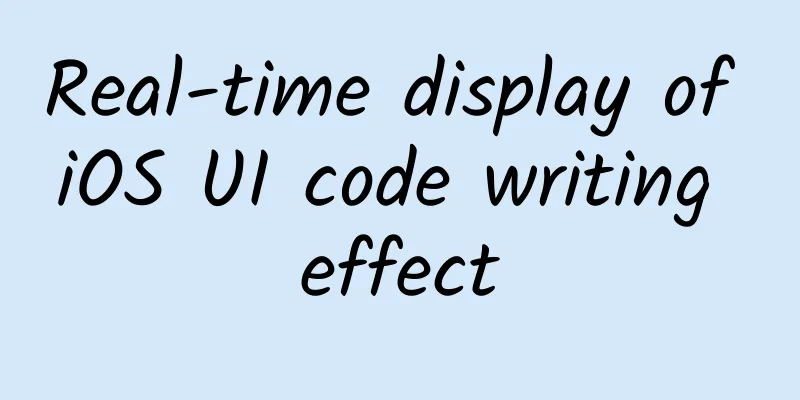Amazon's new wave of machine learning: powerful and actionable

|
[51CTO.com Quick Translation] Professional users can take full advantage of flexible resources such as GPU and FPGA programming in EC2 instances, while ordinary users can use out-of-the-box intelligent solutions to build Alexa-style conversational interfaces.
At today’s AWS Re:Invent conference, Amazon introduced a range of new machine learning solutions—both to stay ahead of the competition and to deliver a wide range of tools from simple to complex to professional-grade products. Hardware options for hardcore users Of course, every release from Amazon includes something related to AWS EC2, and today’s announcement of Elastic GPUs, which is related to machine learning, allows GPUs to be attached to one of the eight existing EC2 instance types, meaning users are no longer limited to choosing from a handful of pre-configured GPU instances as they were in the past. This is almost certainly a response from Amazon to Google's recent moves. Earlier this month, Google first offered GPU instances in its cloud, allowing up to eight GPUs to be attached to existing systems. Regardless of the motivation, Amazon's response is to increase the flexibility of using GPU resources in EC2. However, it should be noted that the service is not yet available to all Amazon customers: as of now, Amazon still says it will be available "soon." GPUs can be said to be the foundation of hardware changes in the current wave of machine learning, but Amazon and other manufacturers have begun to focus on the next battlefield: FPGA. Amazon's latest EC2 instance type F1 contains eight Xilinx UltraScale+ VU9P FPGAs and provides supporting programming tools. FPGAs are likely to complement CPUs rather than replace them. Al Hilwa, program director for software development research at IDC, said in an email that FPGAs will be "generally used to handle highly customized computational workloads, including image, video, and audio stream processing tasks, and the resulting data is often prepared for use in machine learning." Currently, there are far more machine learning software tools for GPUs than for FPGAs. However, applications written for F1 can also be shared on AWS Marketplace, which should eventually provide more development materials that can be used as reference, reuse, and refactoring. Watch and Say Not everyone wants to build something from scratch, and for that audience, Amazon is launching three new high-level machine learning services for text-to-speech, image recognition, and conversational interfaces. Amazon Rekognition is probably the most familiar of these - it's essentially a refined version of an existing set of deep learning capabilities. Given an image, Rekognition will identify common objects in the image - including facial recognition - and then provide feedback based on that (e.g. an overall mood verdict like 'looks happy'). The APIs are simple enough to be easily put together or demonstrated, but the resulting data can be stored and reused for other more complex applications. Amazon Polly is a text-to-speech service that allows users to translate text into spoken language. For example, abbreviations such as "NYC" will be automatically expanded to "New York City", but "Main St." and "St. Peter" will be expanded to "Avenue" and "St. Peter". Each text can also be matched with other contextual data to provide more accurate conversion results. But Amazon's advantage lies in the ease of use under the basic correctness requirements, so except in extreme cases, we don't need to go to such great lengths to improve accuracy. Amazon Lex is something of a venture from Amazon, offering a workflow for building voice-driven conversational interfaces using the proprietary engine behind the Amazon Alexa service and Amazon Echo devices. The Lex workflow uses some of the same building concepts as chatbots, and it can plug into business logic from other Amazon technologies, such as AWS Lambda. Currently, Lex is only available in preview in the AWS East region, but given its promise of delivering top-notch results without the need for fine-tuned machine learning components, it's likely to gain popularity in the near future. Original title: Amazon's next wave of machine learning: Powerful, practical Original author: Serdar Yegulalp [Translated by 51CTO. Please indicate the original translator and source as 51CTO.com when reprinting on partner sites] |
<<: CTO Training Camp: A practical open class that won’t say goodbye
>>: 360 and Beijing Internet Security officially launched China's first Internet security cinema
Recommend
13 lessons to cultivate a beautiful back and swan neck, easily appear 5 cm taller, and shape a perfect body curve
13 lessons to cultivate a beautiful back and swan...
Analysis of 4 aspects: How to operate?
How to operate it? Where is the output value of t...
How to turn on activity conversion? Share 3 types of gameplay with built-in traffic!
Regardless of the type of activity, the ultimate ...
Super Dealer, helping one million young people who love learning to become rich in sales
Super Dealer, helping one million young people wh...
One trick cost 150,000 yuan in advertising fees! Do you still dare to use these information flow copywriting?
In the past week, nine home improvement companies...
How do you evaluate the amazing Pechoin advertisement that has been flooding the WeChat Moments?
Do you remember Gu Ye’s famous advertisement “Why...
Tencent 360 Lenovo Xiaomi: Why choose them for Windows 10 distribution?
While the mobile Internet is swallowing up everyt...
Samsung imitates Apple to a new level: copying a Steve Jobs
In the confrontation with Apple, Samsung has alwa...
Why are advertisements in 2020 becoming more and more addictive?
The lyrics say, "The only thing that never c...
Writing information flow copy like this will increase the click rate by 12.8 times
When you are selling a summer camp course for an ...
Bai Yansong: Nowadays, mobile phones push notifications based on hobbies, which is one of the most destructive ways to deal with people
According to the Beijing News, Bai Yansong, a mem...
Android Data Adapter Optimization: Efficient ViewHolder
When using Listview or GridView, a custom data ad...
How to make 1000 yuan a day. Is there any way to make 1000 yuan a day?
How to make 1000 yuan a day. Is there any way to ...
How to create a high-authority account on Douyin? A guide to developing a high-authority account on Douyin
Everyone knows that Douyin accounts are divided i...
How to accurately classify users and reduce promotion costs?
In marketing promotion , if target users are simp...









